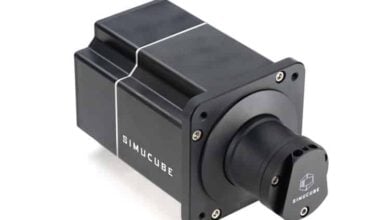At present in the United States, 1 quarter of healthcare expenditures are administrative overhead. In a country that spends trillions on healthcare, that’s an eye watering sum of money. One of the reasons overhead costs so much is because the process is riddled with errors.
Consider some of the most common causes of error in the healthcare system. Desk staff make mistakes capturing or keying in patient information. They capture the wrong insurance information for the service being performed. They discover too late that the patient who received care suffered a lapse in coverage. The identified payer is the wrong person. Insurance benefits change over time, yet aren’t properly updated. Simply put, patient and subscriber information are inaccurate far too often. Given all these sources of error, is it any wonder the US healthcare system wastes up to $850 billion every year on inefficiency?
Unverified insurance causes more problems than most people realize. 25% of all spending on payment processing in healthcare is wasted on pricing failures and needless administrative complexity. Insurance claim errors alone waste over $17 billion every year. That’s money actually charged. Also a problem is money left on the table. Patients and providers miss out on almost as much ($16.3 billion) in savings every year as well.
On a system wide level, these numbers can feel intangible. Consider an average medical practice, one with 6 or 7 physicians serving patients in the same office building. Verifying insurance benefits correctly the first time at the time care is provided could save them $4,500 every month. $4,500 is more than some workers make in income every month!
Telehealth only makes the practice of verifying insurance even harder. Before the pandemic, Medicare only covered telemedicine for rural patients. Thanks to COVID-19, 1 in 4 Medicare beneficiaries turned to telehealth to keep up with doctor visits. 74% of US patients overall are interested in using telehealth services beyond the pandemic. However, 17% aren’t sure if their insurance provider covers remote care. Telehealth providers might not know either. Many don’t have front office staff to help them verify coverage. Healthcare providers are there to provide care; many aren’t used to managing insurance verification themselves.
Obviously, insurance verification is a serious problem in healthcare. But what is the solution? One possibility is automated insurance capture. AI-powered insurance capture and verification could be just what the healthcare industry needs to reduce billing errors.
Compare AI verification with the current, manual system. Manual entry and evaluation introduces human error into the process. Calling payers requires long wait times, which are impractical for healthcare providers. Visiting insurance websites is also time consuming, especially since only incomplete information is publicly available. Meanwhile, AI-powered insurance capture uses specialized OCR software to recognize insurance payer data. Insurance card information is extracted, verified, and confirmed without manual intervention.
The switch to AI verification will require a transition period. Right now, insurance cards don’t have a standard format, which makes coverage difficult. Even so, AI-powered solutions can scan and verify cards in less than 20 seconds. There are 3 steps in the process. First, the software captures an image of the insurance card and extracts data. It runs behind a PM/EMR, delivering verification results in seconds. This allows it to transfer data without complex background processing. Second, the software confirms coverage in real time at the point of service. Neither patients nor providers have to guess if care will be covered by a specific insurance plan. Nobody has to guess who the payer is either. Third, the software can calculate real-time price estimates. It identified plan specific benefits to let the patient know copayments and deductibles.
These 3 steps not only save time, but they benefit every stakeholder in the process. Consider healthcare professionals first. Automatic verification could save their practices $2.7 billion. It eliminates the misapplication of insurance benefits, enables suggestions for affordable care plans, and verifies potential treatment suitability. No longer will any healthcare professional need to do those tasks themselves.
For office staff, this software reduces mistakes with insurance forms. It speeds up their claims process and workflow and lowers the likelihood of fraud. Office staff will still be needed to oversee the process. However, fewer office staff will be able to accomplish more work with the introduction of automated capture and verification.
For businesses that provide health insurance to employees, they will see 35% higher cost savings thanks to automated solutions. Again, AI-powered insurance capture and verification provides a streamlined workflow process. It brings increased transparency across departments. Businesses won’t have to spend as much time on deployments and scaling.
Last but not least, there’s the impact of this software on the patient. 75% of patients believe accurate cost models improve their ability to pay for treatments. Uncertainty in how much a service will cost could keep a patient from getting the care they need. Thanks to the AI’s pricing models at point of service, patients can make better decisions about their healthcare needs. Additionally, the software can help patients identify savings they would not have found on their own. Everyone wins when fraud and inefficiency are removed from a system.
Workflow automation is the future. Other industries have already saved millions thanks to AI-powered workflow automation. In healthcare, 50% to 75% of manual tasks in medical practices could be automated in the future. Some may find this statistic alarming. Healthcare benefits from the human touch, the rapport formed between a patient and a provider.
To this point, it is worth remembering that insurance verification does not touch the actual care a patient receives from their doctor or nurse. Instead, automatic insurance verification makes it possible for such care to go forward without uncertainty. This could make the software easier to adopt in 2023 and beyond. Healthcare technology is there to enhance care at every step of the process. This particular technology provides real time results. It reduces claim denials and minimizes the need for manual intervention, providing certainty in care.




